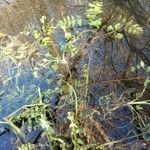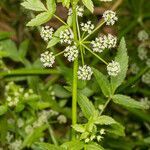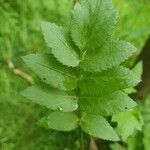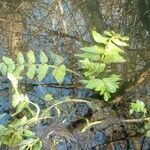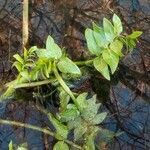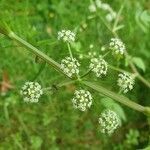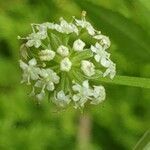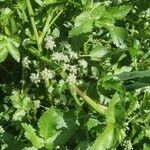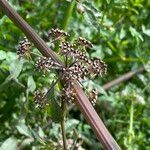Procumbent to ascending, aquatic or amphibious perennial, rooting at lower nodes. Stems hollow, grooved, striate, up to 180 cm long. Basal lvs 1-pinnate, petiolate; leaflets in 2-8 pairs, ovate to lanceolate, serrate, sometimes lobed, particularly the terminal leaflet, 1-8-(12) cm long, sessile; stem lvs similar to basal, but uppermost often reduced to 3-5 leaflets. Umbel 2-4 cm diam., compound, subsessile or shortly pedunculate, lf-opposed; rays 4-14; bracts 0-2, linear to lanceolate; bracteoles 4-8, ovate-triangular. Fls numerous, white, 1-2 mm diam. Fr. ovoid, dark brown, 1.5-2.5 mm long; ribs light brown, slender or slightly thickened.
A stout hairless herb which takes 2 years to complete its life-cycle. The stems are hollow and lie along the ground. They form roots at the lower nodes. The leaf stalks and flower stems are upright. The leaves are alternate and light green. The leaves have oval leaflets with blunt teeth. The flowers are white and in the nodes of leaves. The seeds are oval
Three other spp. are merely casual with us. A. leptophyllum (Pers.) F. Muell., of trop. and subtrop. Amer., is an annual with filiform lf-segments. A. repens (Jacq.) Lag. and A. nodiflorum (L.) Lag. are Mediterranean rhizomatous perennials. The former has a well developed involucre, the latter does not.
